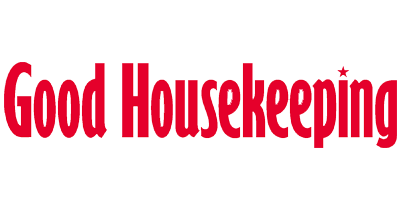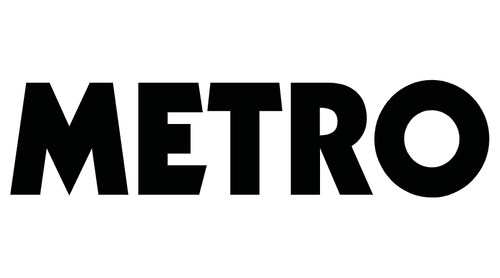

Is Death a Yes or No Card in Tarot?
Ever pulled the Death card during a tarot reading and felt a chill? It's a common reaction, but what if you've been misreading its message all along?
Let's dive into the transformative power hidden within this mysterious card.
You might be wondering, is Death in tarot a straightforward yes or no?
We're here to unravel the myths and provide you with a deeper understanding. Stick around as we explore the true meaning behind one of the most misunderstood cards in the deck.
In this article, you'll discover how the Death card can signify change, endings, and the promise of new beginnings.
It's time to shift your perspective and embrace the potential for personal evolution that tarot offers.
Get ready for some tarot insights that could change the way you see the cards—and maybe even life itself.
Understanding the Death Card in Tarot
Dive deep into the mystique surrounding tarot's most misunderstood card: Death.
Shrouded in misconceptions, this iconic card has more to say than just "game over."
So, before you shuffle the deck and lay out a spread, let's peel back the layers and discover the true essence of the Death card.
Think of the Death card as your personal transformation guide, ushering in a season of tremendous change.
It's not a red flag but rather a green light, signaling that it's time to release what no longer serves you and make room for fresh experiences.
Picture it as the ultimate Marie Kondo of your soul's journey—thank the past for its service and joyfully toss it to make way for the new.
When the Death card appears, it's a clarion call for a much-needed transition. You're not just closing one door; you're preparing to open another, filled with possibilities that are just waiting to be seized.
Yes, the initial goodbye can sting, but the space it creates for something new is priceless.
Keep the following in mind:
- Embrace change, even when it's uncomfortable.
- Release outdated beliefs and habits to make room for growth.
- View the Death card as a symbol of renewal and potential.
In the dynamic landscape of tarot, yes and no answers are too simplistic for such a complex art.
The Death card does not fit neatly into either category—it beckons you to adopt a broader perspective.
It challenges you to ponder deeply about what is coming to an end and what is about to bloom in its place.
The Symbology Behind the Skeleton
The skeletal figure often depicted on the Death card is not there to spook you. Instead, it represents the bare bones of existence, the fundamental changes that are both inevitable and necessary.
The figure rides forward, symbolizing motion and progress. You're not stagnant or retreating; you're moving forward with purpose and determination.
Remember, every ending sets the stage for a new beginning. The Death card does not signify an abrupt halt but a segue into a new chapter of your story.
Debunking the "Yes or No" Myth
Imagine you're flipping a coin; heads or tails, yes or no—it's all unequivocally clear-cut, right?
But when you're shuffling your tarot deck, the cards you lay out reflect the rich tapestry of life, not just a binary answer.
The belief that the Death card can be boiled down to a straightforward yes or no is as outdated as a dusty old tome on divination.
Tarot readings are far more nuanced than simple affirmatives or negatives.
Think of each card as a deeply layered novel. Just as the Death card isn't about an actual end-of-life event, it's not strictly a yes or no beacon either.
Tarot is about guidance, reflection, and sometimes, it prompts more questions than answers, pushing you to explore your own narrative more deeply.
In typical yes or no readings, you might find yourself craving definitive answers. The Death card, however, invites you to step into the realm of transition and doesn't entertain the notion of absolutes.
You’re not just looking for permission or denial; instead, you’re being nudged toward the conceptual doorways this card opens. It's about embracing the cyclical nature of life, where every conclusion is just the prologue to another story.
The skeletal figure on the Death card, marching forward, doesn't halt at yes or no crossroads—it marches on, urging you to do the same. It’s a herald of change, not a stop sign.
Seeking to define this card through a binary lens limits your potential for insight and personal evolution.
So, cast aside that coin and shake off that craving for clear-cut answers.
Engage with the symbols, the imagery, and the intuitive hits that the Death card presents. It’s an intricate piece of your personal puzzle, one that reflects the intricate ebb and flow of existence rather than a simplistic directive.
Lean into the journey of self-discovery it illuminates and consider the transformative prospects that lie beyond mere yes or no questions.
The True Meaning of the Death Card
Death tarot card insights continue to mystify and challenge, beckoning you to peer beyond the veil of your current perceptions.
This card isn't about your physical demise; rather, it's a vibrant clarion call for significant transformation and profound inner change. When this card appears, it's not asking you simply to nod 'yes' or shake your head 'no'.
It’s nudging you towards the profound introspection of your life’s current chapter, hinting at the chance to author an exciting new volume.
Picture the Death card as a dramatic pause in life's symphony. It's a powerful prompt, reminding you that transitions are natural, necessary, and often, ripe with hidden possibilities.
This card doesn't represent an end, but a stirring intermission before the uptick of the next act begins.
The skeletal figures, the falling monarch, the rising sun in the background – they all narrate stories of closure, sure, but also whisper the secret of impending regeneration and growth.
Embrace the imagery: the horse-mounted figure of Death, unyielding and purposeful, illustrating that change comes regardless of personal readiness or resistance.
The black banner adorned with the white rose signifies purity, signaling a cleansing process for what lies ahead.
Each symbol dances with the undertones of release, encouraging you to let go of the outdated to make room for the rebirth of fresh perspectives and novel endeavors.
In the grand tapestry of tarot, the Death card weaves a thread indicating the end of an era but also the unfurling of a new destiny's banner.
It's a chapter of life demanding to be closed, not with fear but with an open heart and the readiness to step through newly opened doors.
As you encounter this card, consider the skeletons in your own life closet that might need ousting. It’s an opportunity to purify, to shed the old skin, and to emerge with a vigor renewed by life's ceaseless rhythm of change and revival.
Significance of Change and Endings
When pulling the Death card, you're encountering the symbolic powerhouse of the tarot deck. It’s time to buckle up for a metamorphic ride.
The card whispers—or, perhaps, boldly declares—that your current chapter is waving goodbye.
Change and endings are knocking, and they’re not here to be ignored.
In the grand tapestry of life, change is the thread that keeps your story vibrant. The Death card doesn't shy away from this truth. It serves as a wake-up call that end is not The End, but rather a peculiar plot twist.
Just as nature cycles through seasons, you too must shed your old leaves to bloom anew.
Through the eyes of the Death card:
- Outdated patterns are recognized.
- Stagnant energy is cleared.
- Space is created for fresh, exciting paths.
Imagine standing at the edge of a cliff – the horizon stretched before you is a mix of daunting unknowns and electric excitement. That's the essence of the Death card.
It proposes that shedding your former self is both a necessary rite of passage and a door flung wide open to possibility.
Letting go is an art; mastering it ushers in a renaissance of your psyche.
Continuing life's dance means embracing these shifts with open arms. When the familiar crumbles, take it as your cue to leap into new experiences.
Your narratives transform, morphing the fabric or your existence into something even more extraordinary. As you evolve with every turn of the card, keep your mind alert to the evolution that awaits beyond the illusion of finality.
Embracing New Beginnings
As you shuffle the deck and lay down your spread, the appearance of the Death card might initially elicit a shiver.
But hold your horses—this card isn't screaming "game over." Far from it!
It whispers the thrilling promise of a fresh start. Picture it as your mystical, personal reset button bidding you to throw the doors wide open to new opportunities.
You're not just ending a chapter; you're authoring the first lines of a riveting sequel to your life story.
Think of it as the ultimate plot twist, where you get to redefine the narrative. This card nudges you gently (or perhaps not so gently) out of your comfort zone and dares you to step into the unknown with a spirit of adventure.
Let's look at the practicalities of how this card could translate into a resounding yes in response to your queries.
Perched at the crossroads of past and future, the Death card encourages a robust "out with the old, in with the new" approach.
- It's time to let go of those worn-out jeans (we know you love them, but c'mon).
- Chuck that outdated playlist and tune into something unexpected.
- Perhaps it's time to swap out those energy-zapping habits for routines that sparkle with promise.
So, when the Death card makes an entrance, consider it your cue to:
- Innovate your lifestyle choices.
- Trailblaze new personal relationships.
- Revitalize your mindset for growth and achievement.
Feel the pulse of potential that beats strong beneath this storied symbol. It's the cosmic green light for reinvention and the reinvestment in your most treasured asset: yourself.
Reimagine your world with a palette that's richer and more vibrant than before, where each stroke of change is a masterful sweep towards the masterpiece of your life.
The Power of Personal Evolution in Tarot
In the world of tarot, every card whispers its own tantalizing tale, with the Death card humming the anthem of personal evolution.
Picture it as the ultimate cosmic coach, nudging you towards a version of yourself you've not yet met.
Tarot isn't just about predicting the future; it’s your personal cheerleader, championing your growth and blossoming.
Transformation isn’t just some fluffy concept; it's the heart and soul of your journey. When the Death card pops up, you're at the threshold of self-reinvention.
It's a wild ride from who you are to who you could be. Imagine shedding your old skin, belief by outdated belief, and stepping into a life so vibrant it practically sparkles.
Don't get it twisted: evolution can be bittersweet. You might need to let go of treasured parts of your life—goodbyes are never easy.
But tarot implores you to focus on the sweet aftertaste of new beginnings. Endings are just the universe’s way of queuing up your next big hit.
You'll find tarot is a mirror to your inner world, revealing the aspects ripe for change. It doesn't just spotlight the 'what', it dances around the 'why' and the 'how' too. Your deck is more than a collection of pretty pictures; it's a roadmap to deeper self-awareness.
Every shuffle, every spread lays out a path forward. Whether you’re an avid tarot enthusiast or a curious newcomer, now's the time to embrace the journey tarot offers.
Think of the Death card not as a full stop but as an ellipsis leading into your next chapter.
With each flip of a card, you're not just predicting your fate; you're designing it with bold, confident strokes.
Embrace the transformation, and watch your world shift in miraculous ways.
Read more about Tarot meanings:
0 comments
Blog posts
-

The Evolution of Tarot Reading in Britain: A Journey Through Centuries of Mysticism
Long before tarot cards reached British shores, the islands had rich traditions of divination and fortune-telling. According to Ronald Hutton's seminal work "The Triumph of the Moon: A History of Modern Pagan Witchcraft" (1999), ancient British practices included reading tea...
-

How Moon Worship Shaped Human Culture and Modern Practice
The story of humanity's relationship with the moon begins long before written history. Archaeological evidence, including lunar calendars carved into bone and antler from as far back as 32,000 BCE, suggests our ancestors carefully tracked lunar phases. The Lascaux cave...
-

The Ancient Origins of Angel Numbers, From Pythagoras to Modern Spirituality
Long before the modern spiritual movement embraced angel numbers, ancient civilizations believed in the sacred power of numbers. The story begins in ancient Mesopotamia, where the Babylonians developed complex numerical systems that merged mathematics with divine interpretation. According to mathematical...










